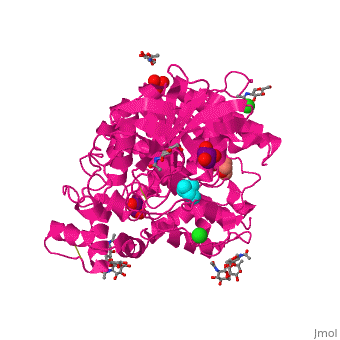Butyrylcholinesterase
FunctionButyrylcholinesterase (BChE) is an enzyme widely distributed throughout the body in humans, but particularly prevalent in serum, where it occurs as a tetramer of catalytic subunits. It is distinguished from the homologous enzyme, acetylcholinesterase, by its ability to hydrolyze the non-natural substrate butyrylcholine as well as the neurotransmitter, acetylcholine. RelevanceBChE finds medical use as a bioscavenger for overcoming organophosphate (OP) nerve agent and insecticide intoxication by interacting rapidly with the toxic agents. DiseaseBChE biological role remains obscure, but mutations in the human BCHE gene result in prolonged post-surgical apnea due to the inability of the mutant BChEs to hydrolyse the local anaesthetic, succinylcholine. Structural highlightsLike in the AChE structure, BChE active site is located at the bottom of a ca. 20A deep gorge. The active site of BChE is similar to that of AChE. The differences are noticed in the lining of the gorge were some of the aromatic residues in AChE are substituted by hydrophobic ones and in the active site acyl-binding pocket where 2 Phe residues are replaced by Leu and Val in BChE. |
| ||||||||||
3D structures of BChE3D structures of BChE
Updated on 17-November-2015
Additional ResourcesAdditional Resources
For additional information, see: Alzheimer's Disease
